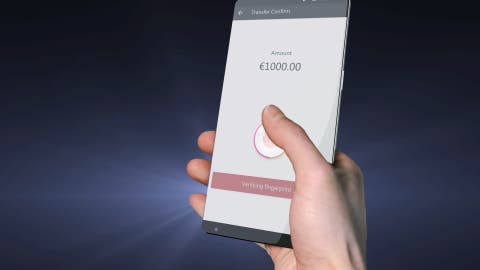Fingerprint sensors on smartphones are all the rage these days. It is difficult to put a “finger” on when the trend started but it’s safe to say that virtually every major manufacturer boasts about launching smartphones with fingerprint sensors and honestly, it’s getting kind of old.
Chinese companies have announced hordes of innovations at MWC this year. Meizu’s Super mCharge can fully charge a battery in just 20 minutes. OPPO’s breakthrough technology will give 5x zoom ability to smartphone cameras. Goodix also has a thing or two up its sleeve.
Goodix is a world renowned fingerprint authentication solution provider and it is the brains behind the implementation of fingerprint sensors on many top-tier smartphones. The Chinese tech company has decided to keep up the pace of innovation by unveiling yet another technological marvel – In-Display Fingerprint Sensor.
This first of its kind technology integrates a fingerprint sensor into the AMOLED display.
This may not sound like a grand innovation at first but its impact is two-fold.
The most apparent benefit of this technology, apart from the bragging rights, is the reduction of screen area occupied by the home button cum fingerprint sensor. Without the need for a physical fingerprint sensor, that annoying rectangular/round button can be thrown out the window, so to speak.
The result would be smooth exteriors and unhindered all-metal bodies. Imagine a monolith slab for a smartphone that looks like it jumped out of a science fiction book.
A rendered image released by Goodix depicts a bezel-less smartphone verifying a user’s fingerprint to authenticate a monetary transaction.
Goodix has not released any technical details about the sensor except that it has low power consumption. The fingerprint sensor is likely to be compact in size so that it can transform an area of the screen into a fingerprint sensor as and when required.
Another smartphone showcased at the Mobile World Conference (MWC) falls into a slot between traditional fingerprint sensors and Goodix’s technology.
The Huawei P10 Plus showcased at MWC uses its fingerprint sensor as a replacement to the on-screen navigation buttons. It does this by recognising gestures on the fingerprint sensor itself. First reports suggest that the idea works well but one has to wonder how many gestures can fit into the tiny area of a fingerprint sensor.
An in-display fingerprint sensor, on the other hand would give a much larger area to play around with. Customising gestures to suit your needs would become a breeze. We eagerly look forward to a smartphone that comes with an in-display fingerprint sensor.
Ahem! Is OnePlus listening?
